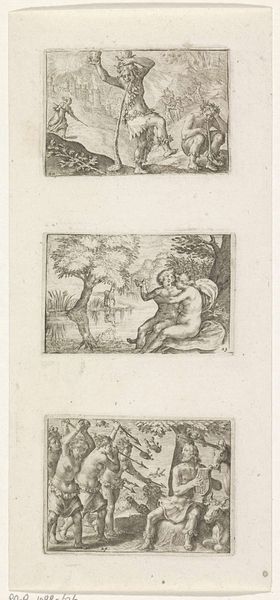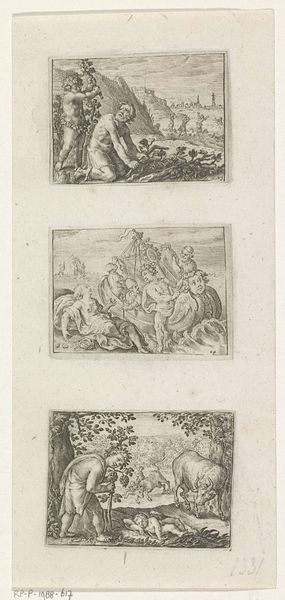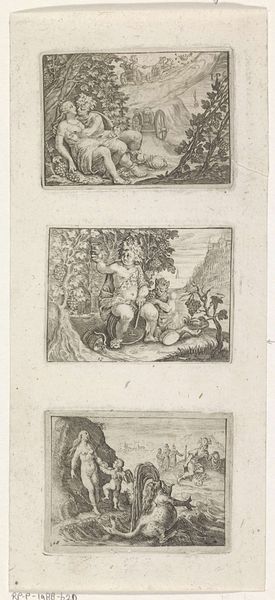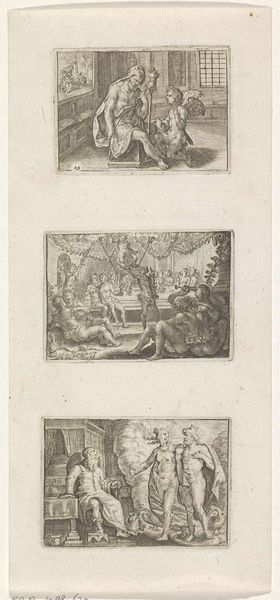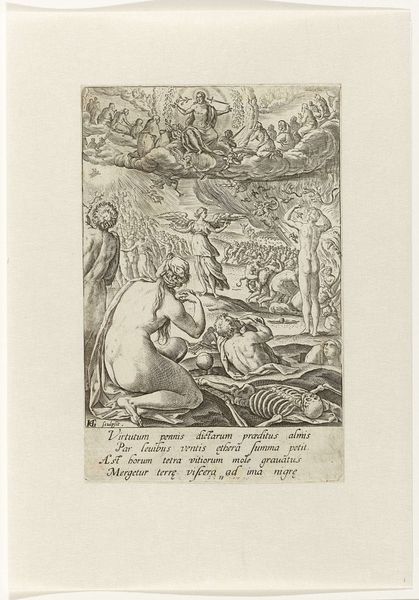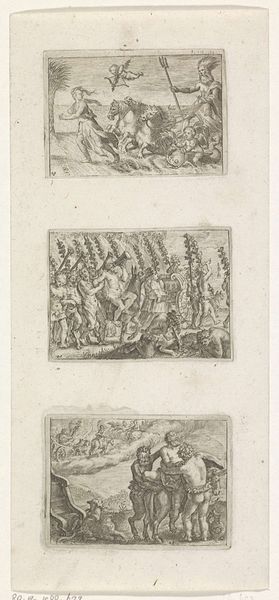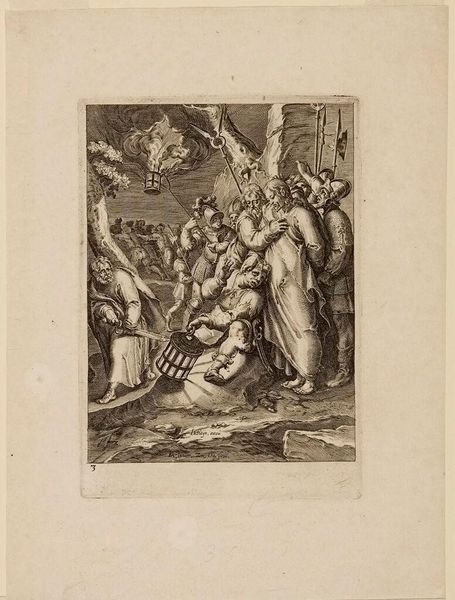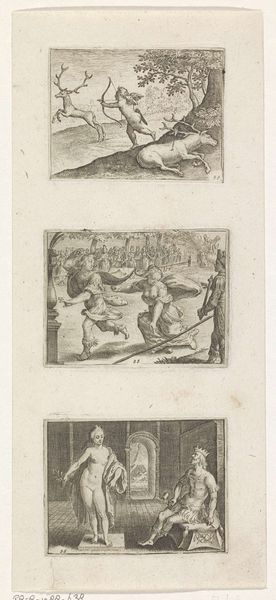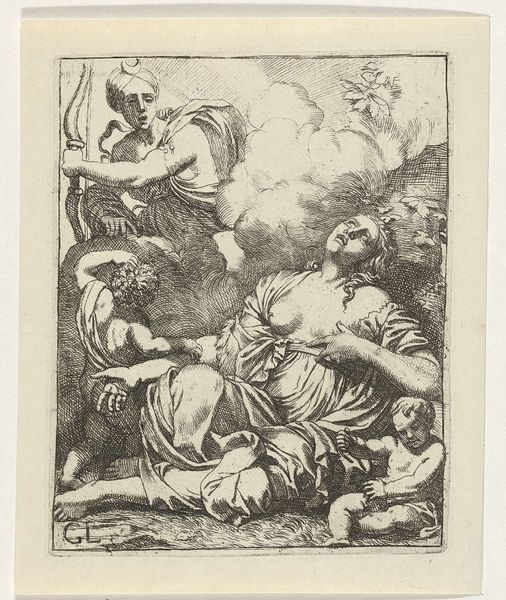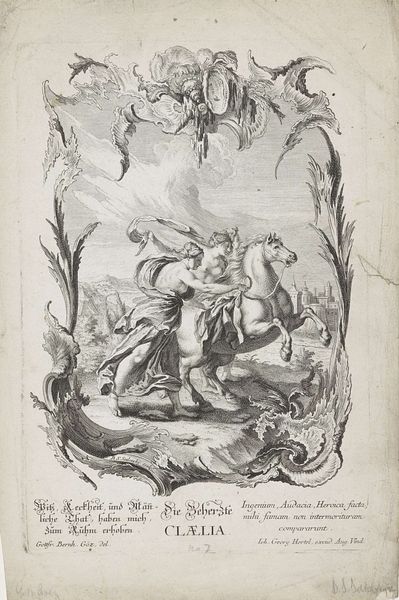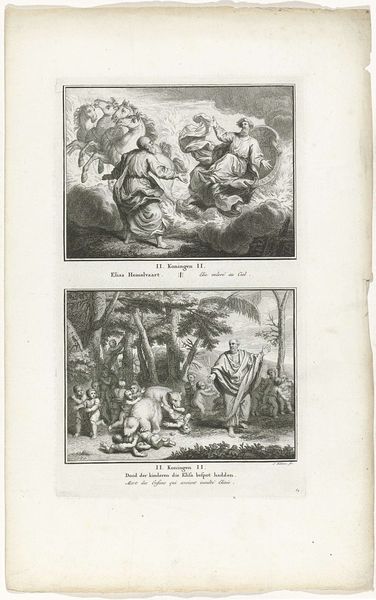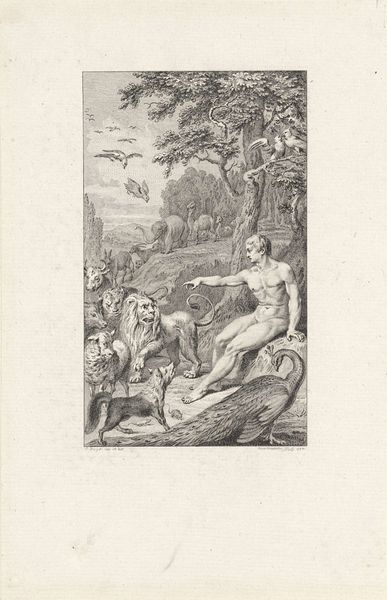
Dochters van Minyas veranderd in vleermuizen / Scène uit de mythologie / Bacchus achtervolgt Erigone 1680 - 1800
0:00
0:00
print, etching
#
baroque
# print
#
etching
#
figuration
#
mythology
#
history-painting
Dimensions: height 225 mm, width 102 mm
Copyright: Rijks Museum: Open Domain
Editor: We're looking at "Daughters of Minyas Transformed into Bats / Scene from Mythology / Bacchus Chasing Erigone," an etching made sometime between 1680 and 1800 by an artist known only as Monogrammist MP. It's a baroque print showing three different scenes from mythology, rendered with fine lines and delicate detail. The overall mood is quite dramatic. What draws your eye, and how do you interpret this work? Curator: What captures my attention first, always, is that potent mix of the sacred and the profane, isn't it? The Baroque was obsessed with just that – that dance between earthly desire and divine retribution. These little narratives, nestled one atop another like stacked dreams, feel almost…operatic. Do you notice how each scene hints at a deeper story? The Daughters of Minyas, weaving tales that dared to defy the god Bacchus, only to be transformed into creatures of the night. The scene below hints at drunkeness, which leads to other unfortunate circumstances, culminating in death. Finally Bacchus comes for Erigone who asks to die. It’s a potent little collection, wouldn’t you agree? Editor: Definitely. The bat transformation is striking and terrifying in that top panel. It makes you think about the consequences of defying the gods! What is it about mythology that inspired so many artists through the centuries? Curator: Well, aren’t myths just vessels for the eternal human drama, dressed up in togas and laurel wreaths? Think about it: love, loss, power, betrayal – these themes are as relevant today as they were millennia ago. And Baroque artists, bless their dramatic hearts, knew just how to dial up the emotional intensity. So, are you catching that vibe, now? Editor: Absolutely. I appreciate your insights; it is all food for thought. I never considered the personal stories, nor the consequences within them. Curator: See art isn’t just what we look AT, but also how we choose to interpret it in a contemporary world. The personal narrative. Always present, always available for analysis.
Comments
No comments
Be the first to comment and join the conversation on the ultimate creative platform.
